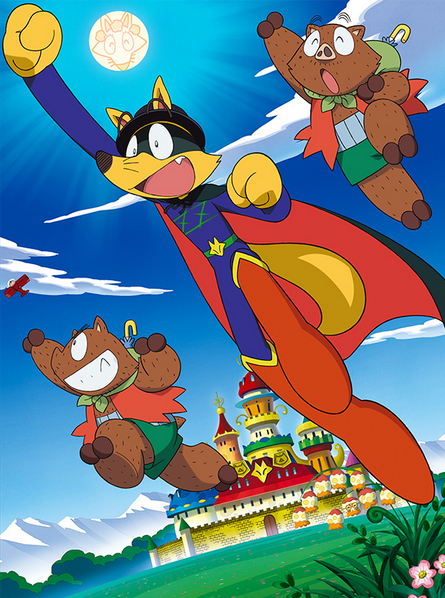
Kaiketsu Zorori is an absolutely delightful anime gem — adorable, fun, and brimming with mischief! Loosely based on a series of Japanese picture books it follows Zorori, a dashing yet chaotic fox whose dreams of building his own castle and finding a beautiful bride are constantly interrupted by life, travel, drama, a serious lack of money, and plenty of hijinks. With his two loyal (and hilariously dim-witted) boar sidekicks, Ishishi and Noshishi, Zorori bumbles his way through one ridiculous adventure after another — from fund-raising with his monster friends to participating in absurd dad-joke competitions — usually leaving a trail of angry shop keepers and townsfolk.
As a pie-flinging furry, how could I not feel an instant connection? Zorori’s prankster antics, trickster charm, and endless costume changes practically scream slapstick fursona goals. The chemistry between the trio is heartwarming, their goofy loyalty making every episode a mix of laughter and "aww" moments. It's got that old-school Saturday morning energy, but with a very Japanese twist of goofiness and sweetness that sets it apart. That said, with TONS of episodes across the series and several movies and OVAs, it can occasionally feel like it drags — especially if you binge-watch. But taken in chunks, it's a joyfully chaotic fox-fueled romp that deserves way more love; furry vibes for the win.
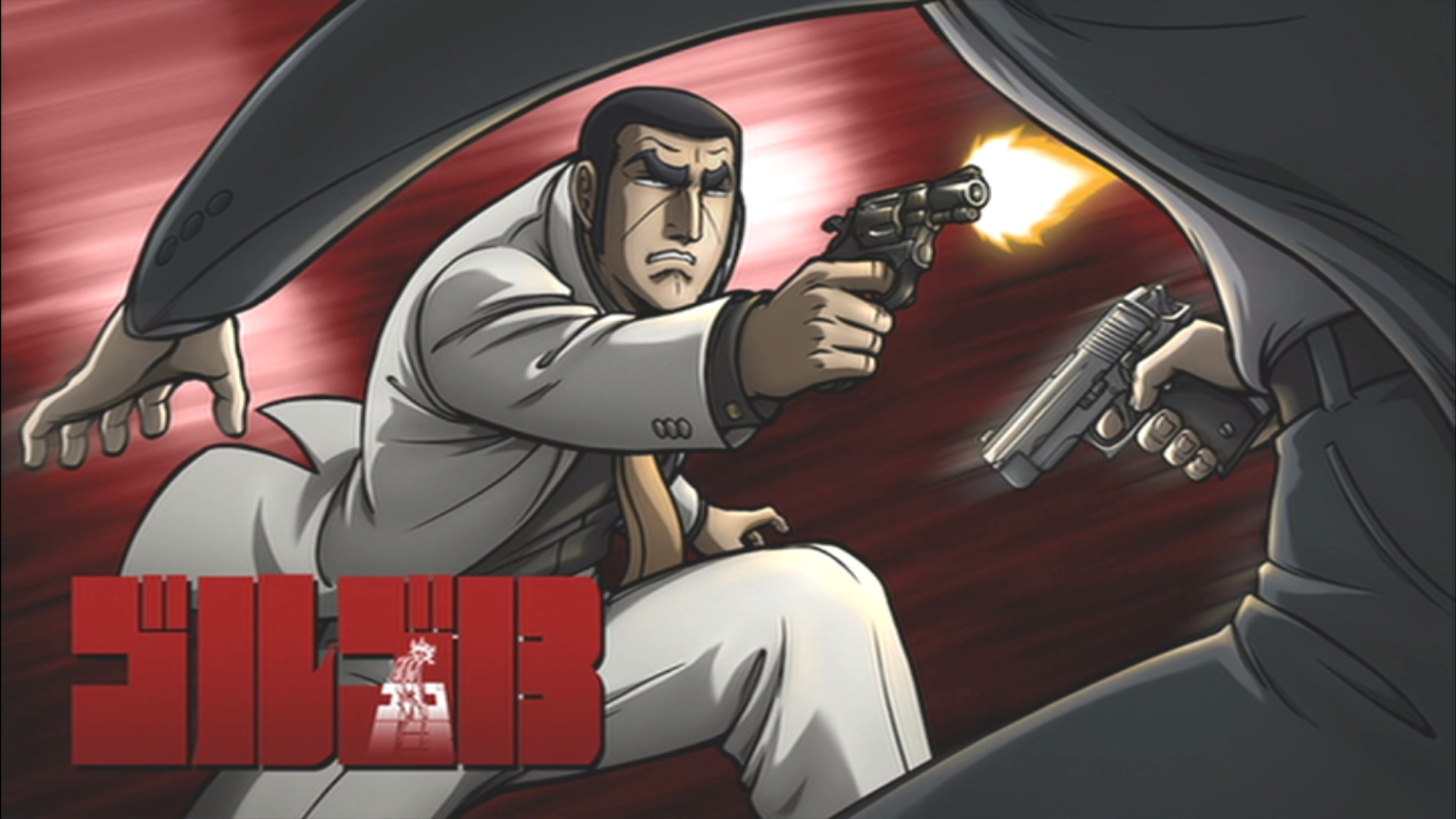
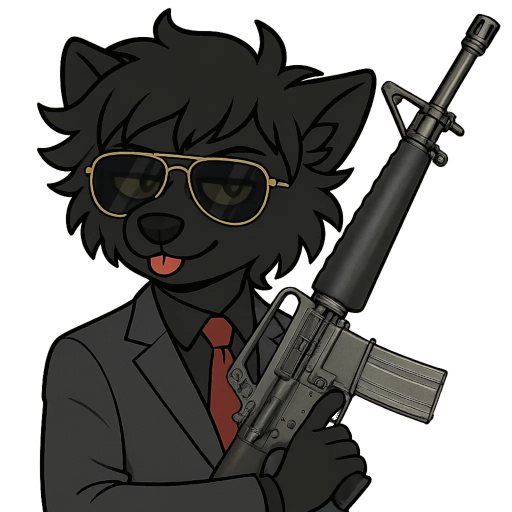
Golgo 13 was originally a manga (that runs to this day), and a very good one at that. Often erroneously described as “the James Bond of Japan,” Golgo 13 is nothing like James Bond. He’s a stoic, cold, and calculating freelance assassin with an unknown, mysterious past. Each story typically centers around a conspiracy, geopolitical scandal, or politically-fueled agenda, and Golgo 13 (real name unknown, codename Duke Togo) may be deeply involved or simply hired to take out a target, carry out sabotage, or quietly tip the scales of power with a single bullet. He often isn’t even the main focus — sometimes he’s a silent force passing through other characters’ dramas, with the story unfolding around the consequences of (or leading up to) his precise actions.
This is absolutely not a series for younger audiences, featuring graphic violence, explicit language, and sexual content, often tied to grim, controversial subject matter. It’s unapologetically mature, with complex moral gray zones, cold realism, and a noir tone that treats assassination as a deadpan profession — not an adventure. If you're looking for a high-octane thriller where the world feels gritty, shadowy, and dangerous — and your protagonist never smiles — Golgo 13 is a classic worth diving into... just be prepared to feel like your world got just a bit less comfortable. I recommend you start with the subtitled version of the movie *Golgo 13: The Professional* (not the live action). Then move onto the 2008 anime series, and then maybe the subtitled version of *Golgo 13: Queen Bee* (though that one is not very good in my opinion).
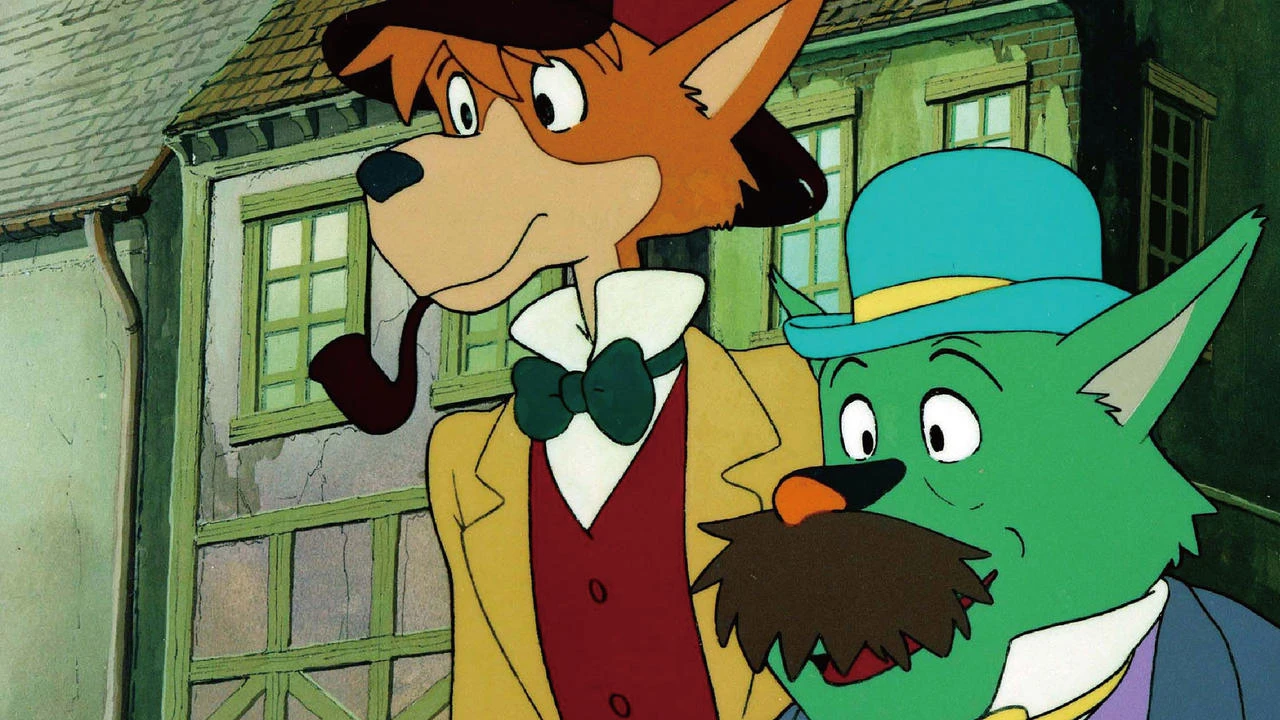
Sherlock Hound is an utterly charming and criminally underrated gem of a series. Directed in part by a pre-Ghibli Hayao Miyazaki, this anthropomorphic adaptation of Sherlock Holmes reimagines everyone as adorable, expressive dog characters and it works brilliantly. Set in Victorian London the show is a warm blend of cozy mystery, whimsical adventure, and classic cartoon chase scenes; all tied together with soft watercolored backgrounds and soft orchestral music.
While it’s older than Kaiketsu Zorori, Sherlock Hound occasionally gives off surprisingly similar vibes. Maybe it’s the mischievous ne’er-do-wells, the elaborate mechanical contraptions, or those wild chase sequences that escalate from clever to chaos in no time. There IS a spirit of lighthearted troublemaking with the goofy bad guys that makes both shows feel like distant cousins; though the vibe is more tea-and-crumpets with a side of absurdity than cream-pie-in-the-face.
It’s got heart, humor, and just enough thrills to keep it exciting, but never too heavy. Think rainy day viewing, or a tired evening snuggled up with someone close. Definitely furry-friendly, and a must-watch for anyone who enjoys gentle sleuthing, silly villains, and the wholesome idea that even in a world full of crime a polite dog detective and his loyal sidekick can save the day with brains, bravery, and his trusty magnifying glass.
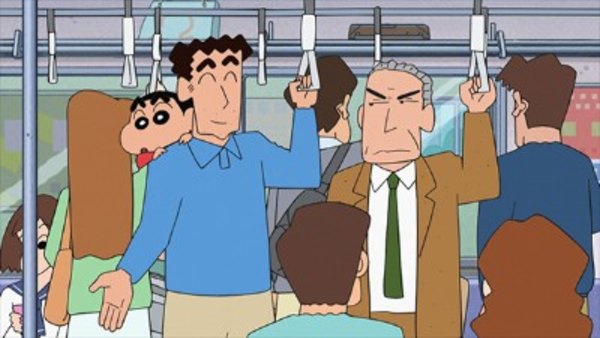
The Funimation dub of Shin Chan isn’t just a localization — it’s a full-on reincarnation. Rather than sticking to the original Japanese scripts, the dub crew went completely off the rails (and I thank them for it.) They rewrote the show with a distinct comedic, cynical, and adult-humored tone; embracing a South Park–esque style of humor that’s foul-mouthed, wildly inappropriate, and utterly brilliant. The result? A version of Shin Chan that’s as crude as it is clever — and somehow manages to be vastly superior to the original. And it works because of how unhinged it is. Shin is a tiny chaos gremlin in a red shirt with zero filter and maximum sass, caught in a world of deadbeat parents, clueless teachers, and surreal situations. The jokes are packed with absurd pop culture references, sexual innuendos, and adult angst, all delivered with shocking sharpness and a voice cast that goes for it.
There are legendary moments — like when Shin's family had buried Mr. Peebles the smack-addict clown... Or the time Shin's dad Hiro double-crosses him by claiming he's working for more money to give him an allowance, then keeps the money for himself because Shin would "only waste it on dumb stuff anyways." Or anything involving Action Bastard, the hilariously vulgar superhero Shin idolizes, who once fought "Doctor Hitlerclone." The animation might be crude, but the writing? Genuinely sharp and often side-splitting. It’s the kind of show that sneaks up on you — one minute it’s dumb potty jokes, the next it’s a brutal takedown of suburban life or middle-class parenting. The Funimation Shin Chan dub is weird, offensive, chaotic, and totally unforgettable — and that’s exactly why it’s amazing.

The Funimation English dub of Ghost Stories is infamous—in the best possible way—for completely throwing out the original script and replacing it with off-the-wall, adult-oriented comedy. Much like what Funimation later did with Shin Chan, the dub turns a generic supernatural kids’ show into an absurd, irreverent parody packed with edgy jokes, pop culture references, and totally unfiltered humor. The characters constantly break the fourth wall, poke fun at anime tropes, and say things no sane localization team would dare today—like when a girl tells her little brother to put down a haunted doll because, "I’m not going to have a retarded gay brother." It’s crude, chaotic, and completely unlike any other anime dub—Ghost Stories is basically a roast disguised as a horror show.
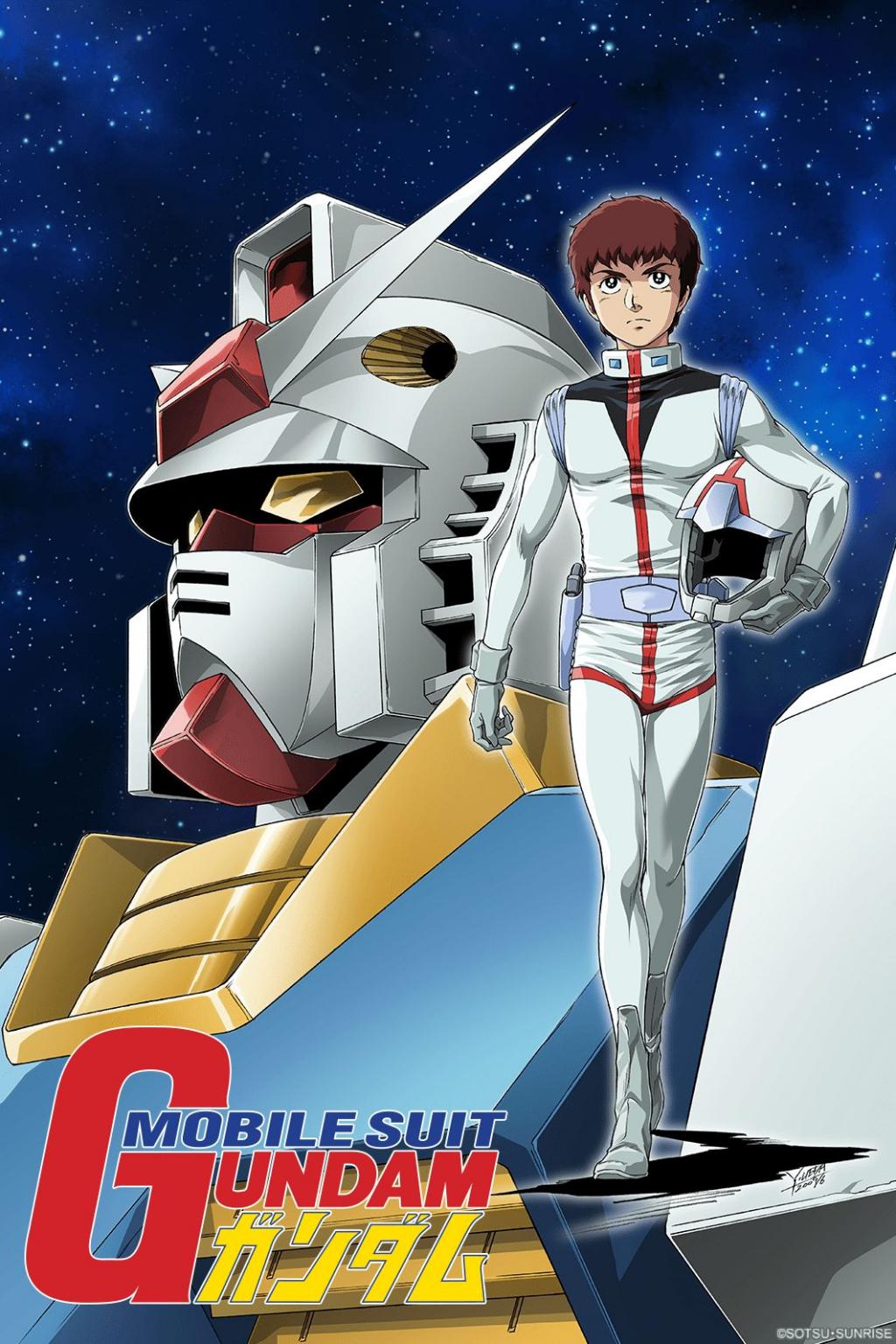
The original Mobile Suit Gundam is where it all began—and yeah, I used to be obsessed with the entire canon Gundam universe. While I’m not quite as deep into the trenches as I used to be, I still have a ton of love for the classic timeline series, and nothing beats the original.
Set in the Universal Century, it tells the story of a brutal war between the space-based Principality of Zeon and the Earth Federation. Zeon mainly pilots iconic mobile suits called Zakus—green, mono-eyed machines of destruction—while the Federation develops the RX-78-2 Gundam, a white, blue, and red powerhouse piloted by teen prodigy Amuro Ray. It’s not just about flashy mecha battles either (though there are plenty of those)—it’s a gritty war drama packed with political tension, loss, and some of the most memorable characters in anime history, like Char Aznable, the masked ace pilot with more mystery and style than most villains ever manage.
It kicked off a whole new kind of sci-fi anime—real robot, not super robot—and laid the foundation for one of the biggest franchises in Japan. From colony drops to emotionally wrecked teenagers piloting death machines, this is where the Gundam legend started.
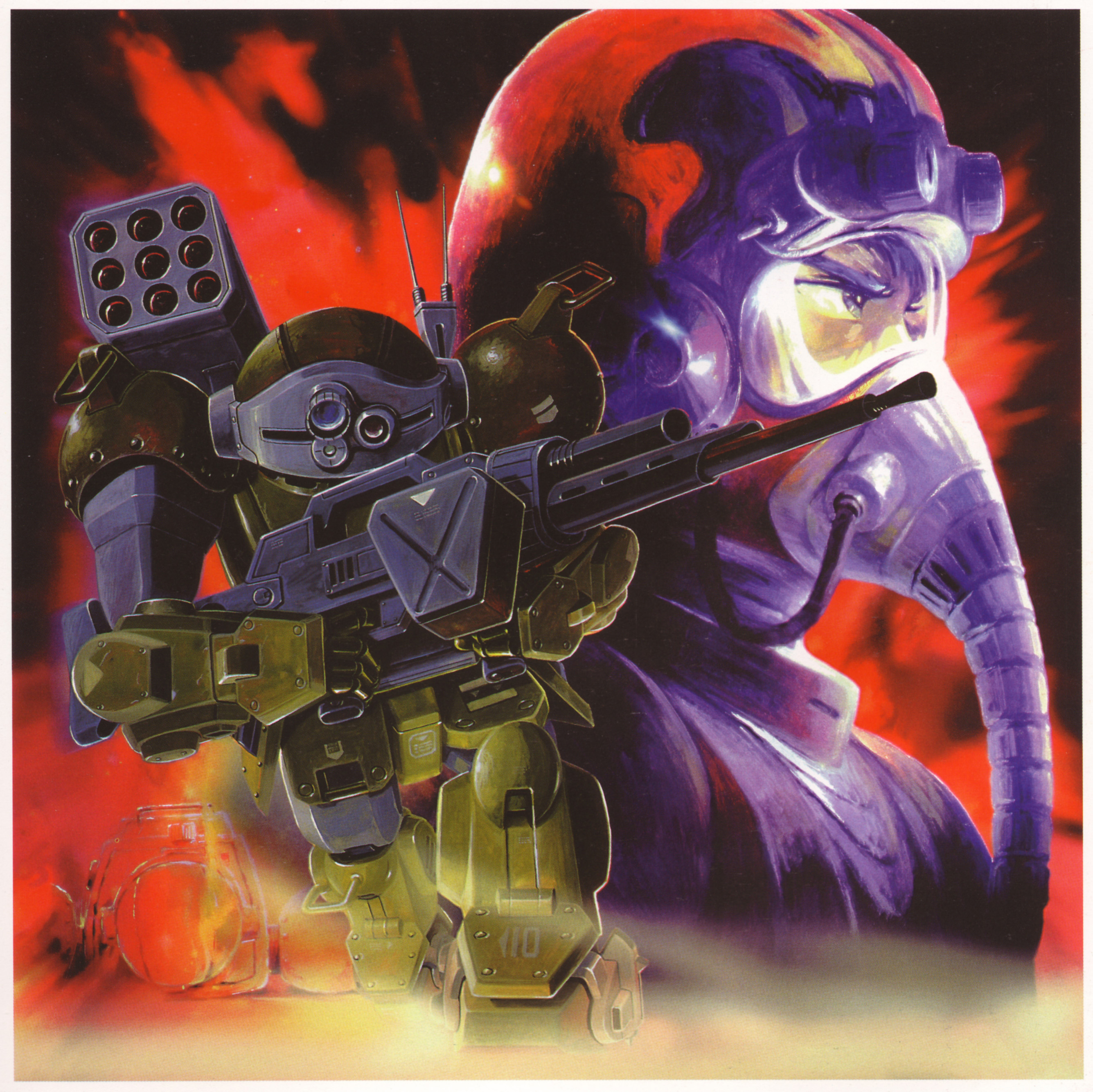
Armored Trooper VOTOMS is one of the grittiest and most grounded entries in the real robot genre—a dark, slow-burn war story where the mechs aren’t heroic symbols, they’re disposable tools of endless conflict. The series follows Chirico Cuvie, a battle-hardened soldier framed for treason and pulled into a sprawling conspiracy that takes him from war-torn battlefields to back-alley slums. It’s heavy on political intrigue, personal trauma, and good old-fashioned mech-on-mech brutality.
While I haven’t gotten around to watching it yet, it’s definitely in my archive, just waiting for the right moment to dig in. I’ve heard it’s a must-watch for anyone who wants their mecha with more mud, blood, and moral ambiguity—and I really need to finally give it the attention it deserves.
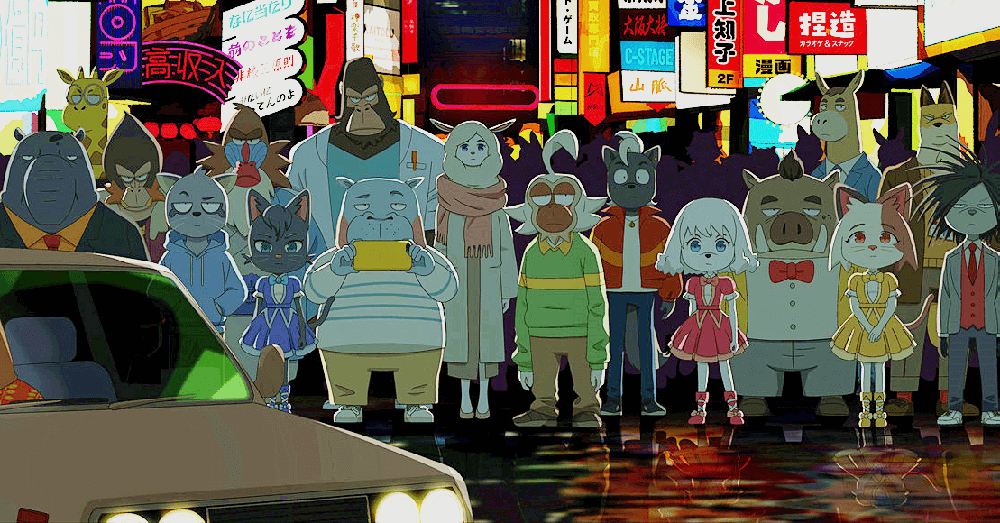
Odd Taxi is one of those anime that sneaks up on you with its deceptively simple style, then bam—you’re deep in a layered, suspenseful, character-driven story that unfolds like a slow-burn mystery novel. Set in a world of anthropomorphic animals, it follows a socially awkward walrus taxi driver named Odokawa who quietly observes the strange, shady lives of his passengers—until things spiral into something much bigger involving missing persons, crime syndicates, and conspiracies.
It’s almost a thriller, but also almost a drama, both merged in the most Japanese way possible: patient, intricate, and emotionally resonant while still being quirky and offbeat. The writing is sharp, the characters are deeply fleshed out, and the plot keeps twisting until you're fully glued.
Also? Total furry vibes.
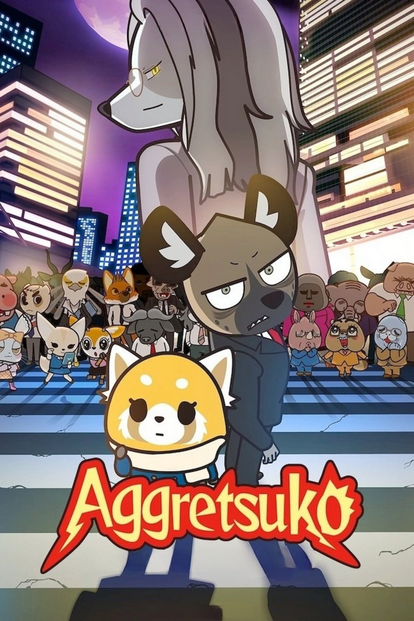
Aggretsuko is a deceptively cute, surprisingly relatable anime about the daily grind of adult life, starring Retsuko—a mild-mannered red panda stuck in a soul-crushing office job. By day, she quietly endures sexist bosses, awkward coworkers, and the endless horrors of corporate culture. By night? She unleashes her inner rage with secret death metal karaoke sessions.
The show is hilarious, emotional, and at times painfully real, tackling everything from burnout to dating, capitalism, self-worth, and existential crisis—all wrapped in adorable animal form.
One of the standout characters is Haida, the awkward, loyal punk rock hyena who’s hopelessly in love with Retsuko. His quiet yearning, self-doubt, and painfully real “nice guy with imposter syndrome” energy make him one of the show’s most human characters—even if he’s a hyena in skinny jeans.
Very furry. So much in fact, someone was selling “Gay for Haida” flags at a furcon.
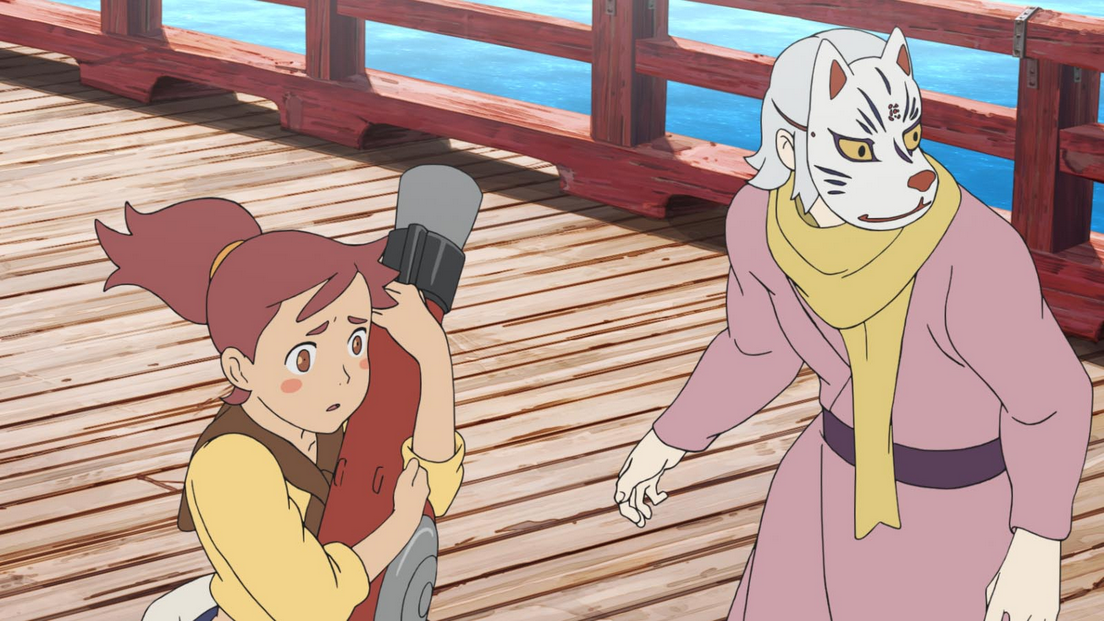
Fuse: Memoirs of a Huntress (also called Fuse: Teppou Musume no Torimonochou) is a beautifully animated, emotionally rich film that blends folklore, action, and heartfelt drama. It follows Hamaji, a spirited young huntress from the mountains who journeys to Edo (old Tokyo) to live with her brother—and gets swept up in a city-wide hunt for “Fuse,” mythical part-human, part-wolf beings accused of killing humans and stealing their souls.
There she meets Shino, a mysterious, soft-spoken boy who turns out to be one of the very creatures she’s meant to hunt. What follows is a tale of conflict, compassion, identity, and forbidden friendship—tinged with tragedy, elegance, and a whole lot of feels.
It’s got old-school Japanese setting vibes, detailed character designs, sword fights, emotional tension, and enough soft boy energy to knock a furry over.
Very furry.
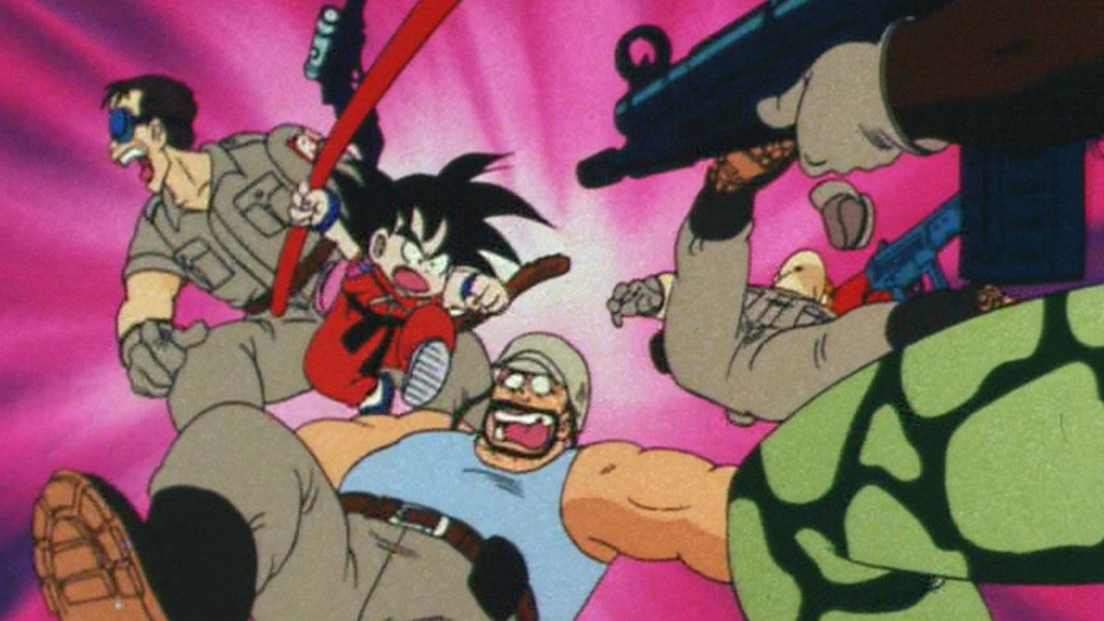
The original Dragon Ball is a chaotic, hilarious, and action-packed adventure that follows a young monkey-tailed boy named Goku as he travels the world searching for the mystical Dragon Balls. Along the way, he encounters dinosaurs, desert bandits, anthropomorphic animals, talking turtles, weird perverts, and more martial arts than you can shake a staff at.
The show is a wild mix of fantasy, sci-fi, slapstick, and old-school kung fu movie energy. It’s lighter and goofier than its later Z counterpart, but still loaded with epic fights and unforgettable characters. (And I admit the early episodes where Bulma was forced to wear a a Playboy bunny outfit,giant fluffy cotton tail and all, was one of my early guilty-pleasures from anime back in the day.)

Sgt. Frog is an absolutely adorable, goofy, and wildly entertaining anime romp about a squad of alien frogs who come to Earth to conquer it… but immediately get sidetracked by the joys of human culture.
The leader, Keroro, ends up living with a human family and quickly forgets all about world domination in favor of watching TV, eating McDonald’s, and obsessively building Gundam models. His second-in-command, Giroro, is the grumpy, mission-focused soldier who’s constantly frustrated by Keroro’s lazy, indulgent behavior — creating a hilarious dynamic full of tongue-in-cheek tension and slapstick chaos.
Between the dysfunctional frog squad, the exasperated human family, and constant pop culture parodies, the show is equal parts cute, chaotic, and clever. It’s perfect for fans of absurd humor, aliens who act like bickering teenage nerds, and anime that doesn’t take itself seriously one bit.
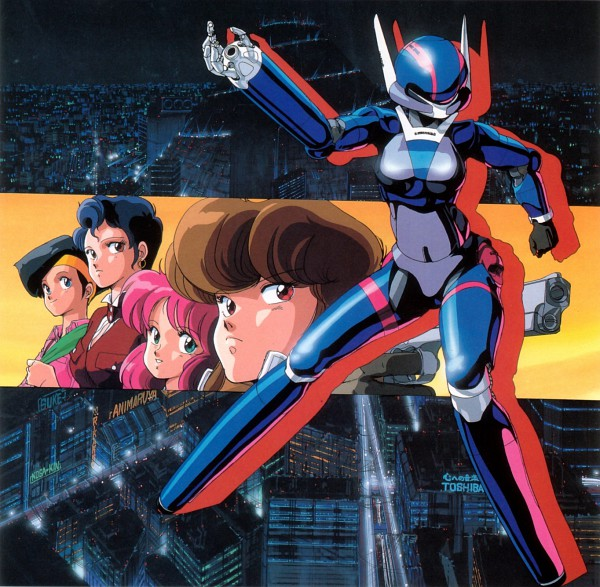
In a neon-drenched, corporate-controlled future Tokyo, an all-female team of power-suited vigilantes known as the Knight Sabers battles rogue androids called Boomers. With killer synth music, slick animation, and gritty cyberpunk vibes, Bubblegum Crisis delivers high-octane action and moody tech-noir storytelling that helped define '80s anime cool.
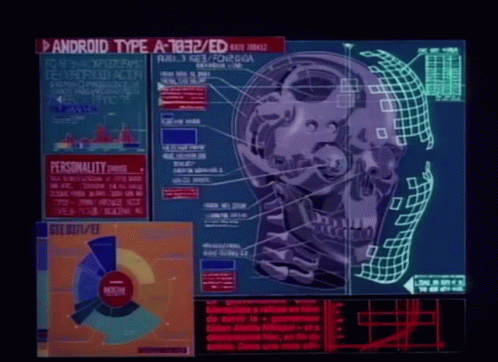
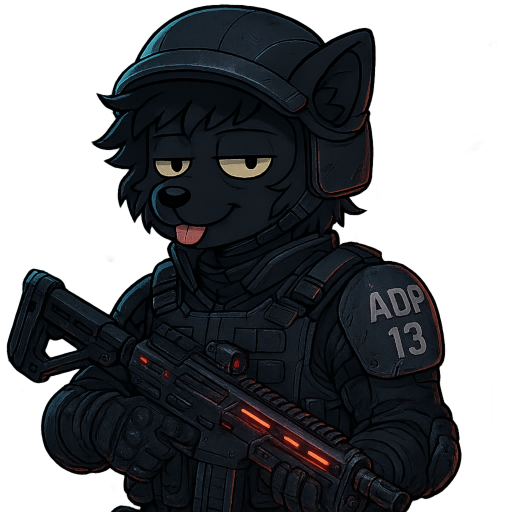
Set before the events of Bubblegum Crisis, this darker, grittier spin-off follows the elite A.D. Police as they try to hold the line between humanity and machine. As cybernetic crimes spiral out of control, the show dives deep into body horror, AI ethics, and urban decay. Both series are stellar examples of the cyberpunk anime genre—stylish, violent, and way ahead of their time with bitchin' soundtracks.
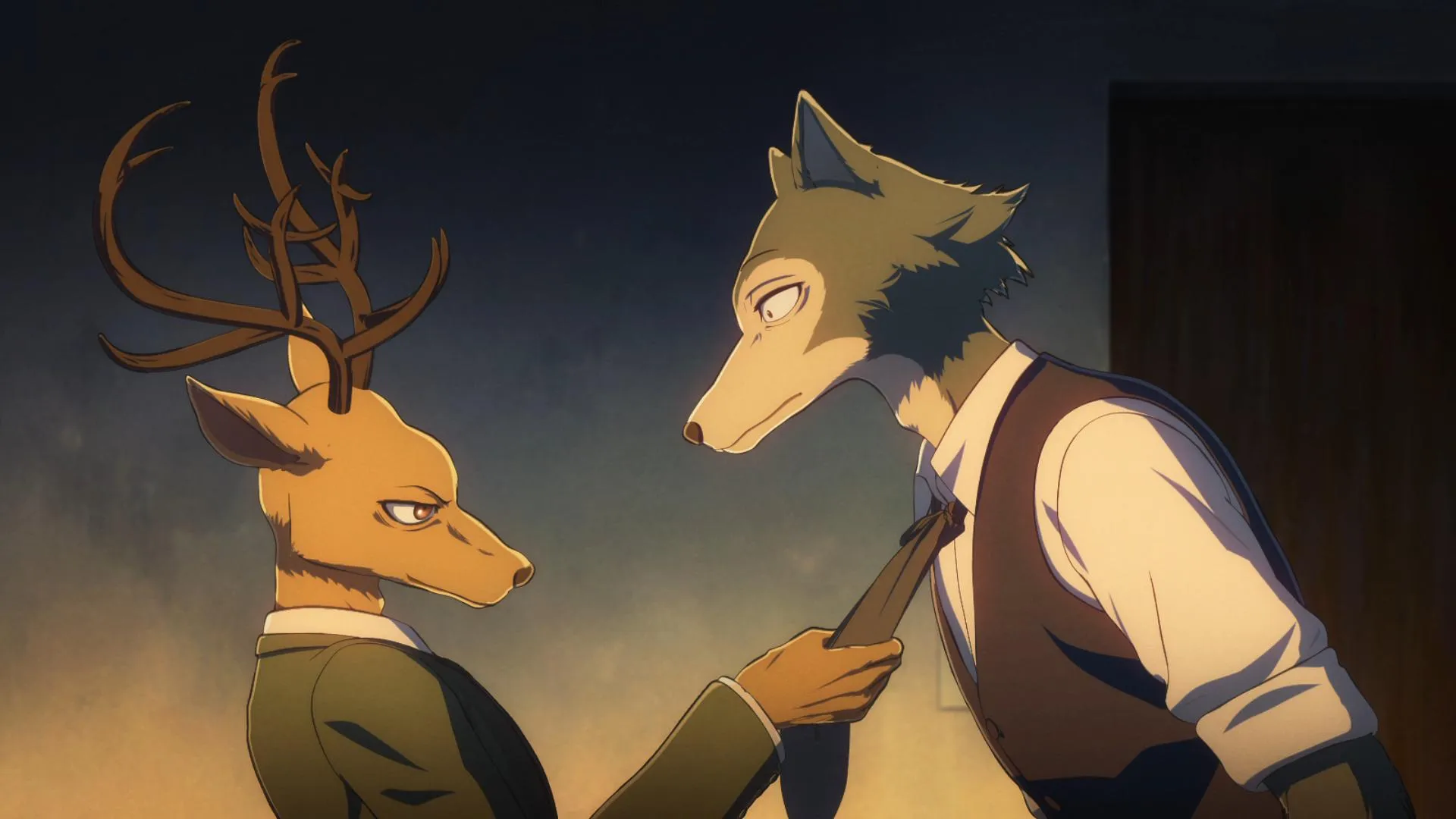
Beastars is what happens when you take a high school drama, stir in deep psychological themes, sprinkle on some noir, and cast the whole thing with anthropomorphic animals—and somehow, it works.
Set in a world where carnivores and herbivores coexist in a fragile, civilized society, the story follows Legoshi, a quiet, awkward gray wolf struggling with his instincts after a classmate is mysteriously killed—and after he develops confusing, possibly dangerous feelings for a small white rabbit named Haru. Meanwhile, the school is bubbling with tension, hormones, and unspoken prejudice.
What seems like a furry teen romance at first quickly unravels into a gritty, introspective story about identity, repression, trauma, and how society tries (and fails) to tame the beast within. And yes—it’s also got murder, mafia drama, underground fight clubs, and a deer who’s basically a Shakespearian antihero douchebag.
The art style is unique, the characters are complex, and the vibes shift from tender to terror in seconds. Beastars is surprisingly mature, emotionally raw, and stylish as hell. It’s not just a “furry show”—it’s a damn good show, period.
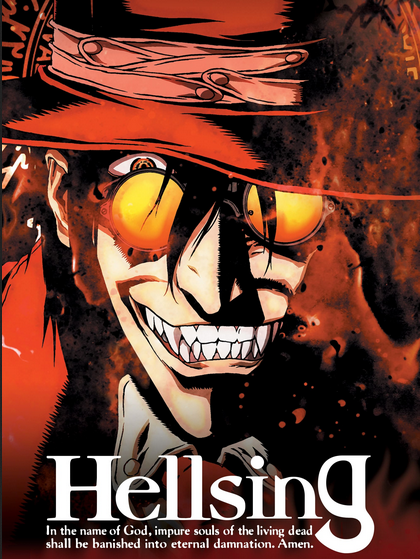
Hellsing is a stylish, gothic-action anime that combines vampires, guns, and religious warfare in one gloriously bloody package. Loosely based on Kouta Hirano’s manga, it follows the secretive Hellsing Organization, led by the steely and badass Integra Hellsing, as it battles supernatural threats to protect Britain from the shadows. At the heart of the fight is Alucard—an all-powerful, immortal vampire who serves the Hellsing family, relishing every opportunity to unleash carnage on his own kind.
The show kicks off when Seras Victoria, a police officer turned vampire by Alucard, is drawn into this world of ghouls, undead armies, and rogue Catholic assassins. Together, they confront everything from bio-engineered freaks to ancient conspiracies in a series that’s equal parts horror, action, and philosophical musing on what it means to be human—or monster.
The atmosphere is rich and moody, the soundtrack is jazzy and intense, and the sheer cool factor of Alucard—cocky, sadistic, and practically invincible—cements the show’s cult status.
It’s got attitude, bullets, blood, and one hell of a vampire at the center of it all. The 2001 series still holds up as a dark, stylish ride into the heart of chaos.
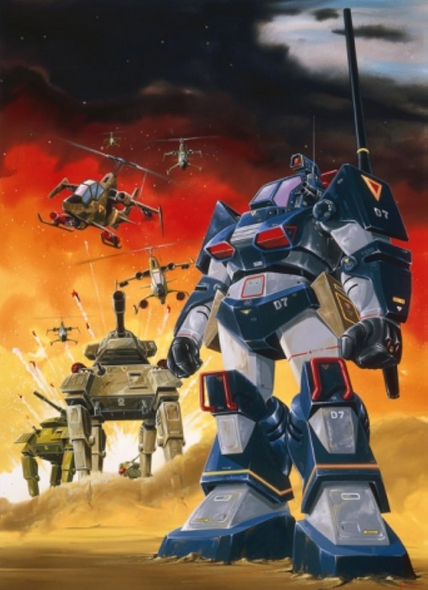
Fang of the Sun Dougram is a classic 1980s mecha anime that stands apart from many of its contemporaries with a gritty, grounded tone and a strong political narrative. Set on the colonized planet of Deloyer, it follows Crinn Cashim, the son of a ruling governor, who defects to join a rebel group fighting for independence. Rather than flashy super robots or over-the-top battles, Dougram presents a more realistic depiction of guerrilla warfare, with the titular mecha acting more like a battlefield tool than a superhero machine.
One of the coolest aspects, especially for gun nerds, is that the show incorporates real-world firearms alongside the mechs. The rebels use recognizable weapons like Bushmaster Arm Guns, Browning Hi-Powers, and other military hardware of the time, adding a tangible sense of realism and grit to the action. This blend of grounded military gear and realistic mech design gives Dougram a unique charm—it feels less like a sci-fi fantasy and more like a political war drama with robots.
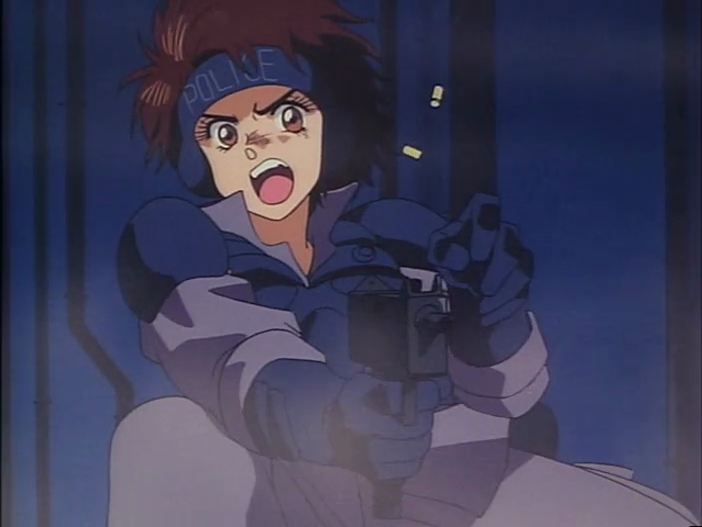
Dominion Tank Police is a wild, hyper-violent, and often hilarious cyberpunk anime from the late '80s that doesn't hold back on the chaos. Set in a smog-choked future city plagued by rising crime and collapsing infrastructure, it follows a tough, no-nonsense squad of police officers who patrol the streets in—you guessed it—heavily armed tanks. Rookie officer Leona Ozaki joins the Tank Police and immediately makes a name for herself by wrecking her team’s ride and building her own smaller, zippier tank named Bonaparte.
The original OVA mixes absurd humor with gritty cyberpunk style, packed with shootouts, car chases, and the over-the-top antics of the iconic Puma Sisters—catgirl criminals who cause as much confusion as they do carnage. (Think land mines that turn into giant traffic-obstructing penises.) While the tanks take center stage, gun nerds will also get a kick out of the detailed firearm designs and explosive action. The anime oozes that distinct late '80s Japanese cyberpunk flair—raw, dirty, and delightfully anarchic.